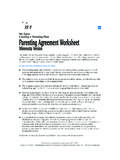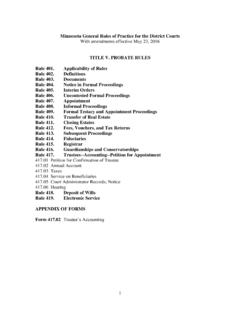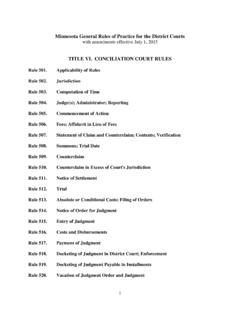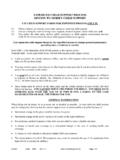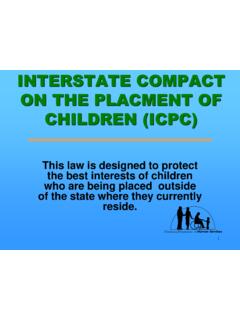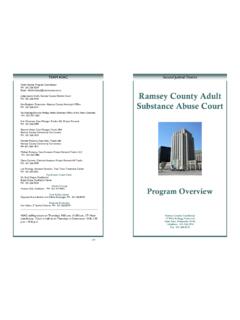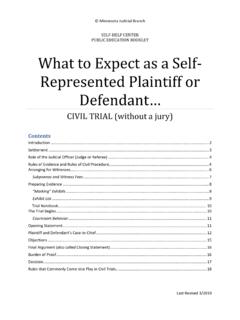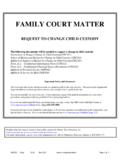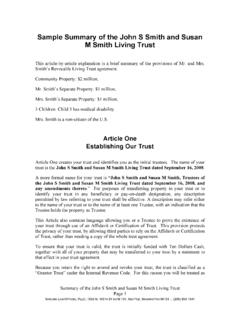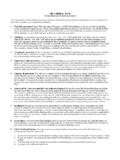Transcription of Instructions for Joint Petition for Dissolution of ...
1 DIV1701 State ENG Rev 10/17 Page 1 of 6 Instructions for Joint Petition for Dissolution of marriage with children Where Do We File? File in the County where you or your spouse live now. To file for marriage Dissolution (Divorce) in Minnesota, you must have lived in Minnesota for at least the past 180 days. There is a limited exception to the residency requirements for same sex couples who were married in Minnesota but no longer reside in Minnesota. See Minn. Stat. , subd. 2 (2013). Court administration staff cannot assist you with questions on where to file your Dissolution action. You may wish to seek legal advice if you have questions. Who Can Use this Form? You can use this form if you and your spouse agree on everything and there is /are Joint children born to you and your spouse. A Joint child is a child you and your spouse have together, including children born of you and your spouse before or during the marriage , and children adopted into your marriage .
2 This form may not address all of your needs or concerns. Real estate, pensions, businesses, and other types of property can be handled many different ways. There may be serious negative consequences and tax implications from your decisions on how to divide your property and handle the issues in your divorce. These forms and Instructions do not explain the many legal and financial issues involved in divorce and cannot warn you of specific problems. Please see an attorney if you have questions. Do not use this form if: a) you and your spouse are not in agreement on all issues; or b) if you and your spouse have no Joint children together (a child is defined as a person under age 18, or under age 20 and still in high school; or a person over 18 who by reason of physical or mental condition are incapable of self-support). Filling out the forms: The Joint Petition has two sections.
3 The first section includes Questions 1 through 31 and the second section is the Agreement, which has Provisions 1 through 17. Print very neatly or the court may return your forms to you. Use black or dark blue ink. Answer every question and agreement provision completely. You must disclose all financial information so the Judge can determine if your proposed child support obligation is in the best interests of the child and the division of property and debt is fair and equitable. Include property/debts you own separately and together. For example, if you have a car and only your name is on the title, you still must list the car. Information you will need: Pay stubs or tax return for you and your spouse Medical Insurance information Records of bank accounts and investments Pension information Legal description of any real estate and details about the mortgage and value of the real estate DIV1701 State ENG Rev 10/17 Page 2 of 6 Descriptions of vehicles, their value and monthly payment amounts and total owed Information about credit card and other debt Information on child care expenses Answering the Questions about children Questions 10 through 15 ask about all children , including children both you and your spouse have together AND all children from other relationships (nonjoint children ).
4 It is important that these questions are completed thoroughly. A Joint child is a child born to you and your spouse born before or during your marriage , or adopted by you and your spouse during the marriage it does NOT include stepchildren. A nonjoint child is a legal child born to you or your spouse, or adopted by you or your spouse it does NOT include stepchildren. If either party has given birth to a child born during the marriage from another relationship and a Recognition of Parentage and/or Spouse s Non-Parentage Statement has been signed, you must be sure to attach a certified copy of both forms. Certified Copies of the Minnesota Recognition of Parentage and Non-Parentage Statement can be obtained by completing and notarizing the required form provided by the Minnesota Department of Health. You can get the form from the Minnesota Department of Health website at: or you can call 651-201-5970 to request a copy of the form.
5 The fee for a certified copy is $ per copy. The completed form and fee should be mailed to: Minnesota Department of Health Central Cashiering Vital Records Box 64499 St. Paul, MN 55164-0499 Complete the Questions on Custody and Parenting Time. Questions 16 and 17 in the Petition and paragraph 2 through 4 of the Agreement tell the Court who you and your spouse think should have legal custody and physical custody of the Joint children and establish a parenting time schedule. The Court will decide who should have custody based on what is best for the children . Legal Custody identifies which parent(s) has / have the right to make decisions regarding the upbringing of the children , including education, health care, and religious training. Legal Custody can either be sole or Joint . Sole Legal Custody means that only one parent has a right to make major decisions regarding the upbringing of the children .
6 Joint Legal Custody means both parents share in the decision-making. Physical Custody identifies which parent will handle the routine daily care and control of the children . Generally, the child lives with the parent who has physical custody. Physical custody can either be sole or Joint . If Sole Physical Custody is awarded, the parent with whom the child does not live with will have scheduled parenting time rights unless the court "reserves" parenting DIV1701 State ENG Rev 10/17 Page 3 of 6 time. If parenting time is "reserved" there is no order made for parenting time. You must give the court reasons why parenting time should be reserved. Joint Physical Custody means that the children lives with both parents based upon a schedule that best meets the needs of the children and parents, and that the parents have Joint responsibility and control in the daily care of the children .
7 If you request Joint physical custody, you must be able to show that you and the other parent can cooperate and work together to resolve problems that arise in raising your children . The court may require you and the other parent to agree to mediate any disputes regarding Joint physical custody before bringing a custody dispute back to court. Parenting Time. Question 17 tells the Court what type of parenting time you and your spouse believe is in the best interests of the Joint children . Paragraph 4 of the Agreement is where you will write down what parenting time arrangements you agree upon. It should be clear from your schedule which parent is taking care of each child at all times (24 hours a day/7 days a week). Include the time of day that the child will be exchanged. For example, a weekday schedule might be "the children are with Petitioner A every Monday through Friday, except that Petitioner B has parenting time every Wednesday from 4pm to 8am Thursday.
8 " What is appropriate for parenting time can depend on the age of the child. After you have set out the weekday and weekend schedule, you can agree to a different schedule for summer, holidays, birthdays, or school release days. Some parents include transportation details in the parenting time schedule. If you want to say who is responsible for transporting the child for parenting time, enter that under "Other". It is also possible to request "reasonable parenting time." with reasonable parenting time, there is no schedule in the divorce decree. Instead, the parents work out parenting time themselves, on an on-going basis. If you want "reasonable parenting time" write that phrase under "Other" and leave the rest of the schedule blank. Child Support. When there are children in Dissolution actions, the court must make an order regarding child support.
9 Child support includes costs for the children for basic support for daily living expenses, health care coverage, uninsured and unreimbursed health care expenses, and child care expenses if child care is needed so the parent can work or attend school. The Minnesota Department of Human Services has created an online calculator for figuring out an amount for child support at: You need income information for yourself and your spouse to use the calculator. This calculator will produce a dollar amount for support based on Minnesota law. Enter this information at paragraph 5 of the Agreement. If you think the amount of support should be higher or lower than what the calculator figured out, mark the box that says the amount is a "deviation" in child support. You may need to research the law or get help from a lawyer if you wish to request a deviation.
10 Child Care Support. Minnesota law requires parents to share work-related and school-related childcare costs. Question 26 is where you will tell the Court the costs for child care, if any. The child support calculator will calculate the share each parent should pay, based on their relative incomes. If you or your spouse do not have child care expenses at this time, check the box to reserve the issue in Agreement paragraph 9. DIV1701 State ENG Rev 10/17 Page 4 of 6 Public Assistance Question 18 asks about Public assistance paid by the State of Minnesota. Public Assistance means MFIP, Tribal TANF, General Assistance, MinnesotaCare, Medical Assistance, or Child Care Assistance. Check YES or NO. If YES, write in the name of the county paying the assistance. Minnesota law requires you, as the petitioner, to notify the public authority that you are filing a divorce action when the public authority is paying assistance or processing your application for assistance.
